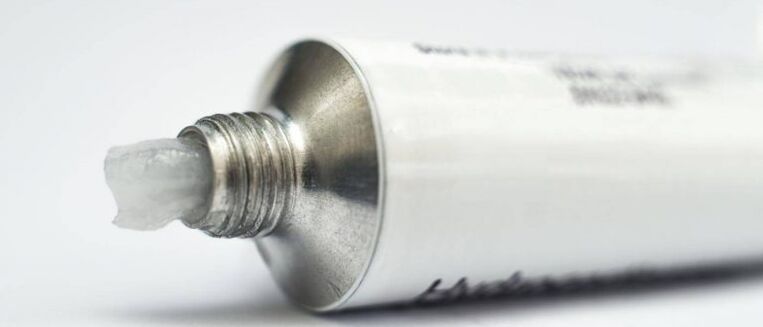Psoriasis is an autoimmune non-infectious disease that manifests itself with severe redness, inflammation and peeling of the skin. The disease is difficult to treat and has a wave-like nature - it occurs with remissions and relapses. It is especially unpleasant when it affects the face, since this part of the body cannot be covered with clothes. Psoriasis on the face brings not only itching and discomfort associated with skin irritation, but also moral depression due to the attitude of others who do not understand that this disease is not contagious.
Is there psoriasis on the face?
In most cases, psoriatic skin lesions affect the scalp, elbows and knees, neck, armpits and inguinal cavities. Can there be psoriasis on the face? It can, but this form is considered atypical and rare.
Psoriasis can be vulgar (ordinary) and seborrheic. The face is often affected by the second form, which is considered more severe due to particularly dense large papules, as well as scales covered with a layer of sebum with a yellowish tint.
Factors contributing to the development of the disease
Doctors still cannot reach a general opinion about the causes of the skin pathology, but they suggest that psoriasis is caused by:
- autoimmune disorders;
- metabolic disorders.
Autoimmune diseases occur due to inadequate work of the immune system, when it begins to perceive its own body aggressively. The predisposition to such diseases is hereditary, autosomal dominant or recessive.

Metabolic disorders are provoked by nervous tension, malnutrition, chronic infections, pathologies of the gastrointestinal tract, hormonal disturbances. Also, the cause of improper metabolism can be uncomfortable climatic conditions and bad habits.
Psoriasis cannot appear on the face for a single reason. It usually leads to many unfavorable factors. In a separate group, doctors identify factors that increase the likelihood of pathology:
- chronic inflammation;
- exchange crashes;
- weakening of the immune system;
- hidden infections;
- regular skin injuries (the main reason that provokes psoriasis on the nose and other prominent places);
- severe or prolonged stress;
- frostbite and overheating;
- poisoning, including alcoholism;
- uncontrolled intake of antibiotics, beta-blockers and antiviral drugs.
What does psoriasis look like on the face: varieties
Psoriasis on the skin of the face is of two types:
- It occurs at a young age - up to 40 years. The peak incidence occurs at the age of 16-24 years. Early pathology often becomes generalized, severe, difficult to treat and often recurs.
- It affects people over 40 years old. The peak incidence occurs at the age of 55-60 years. This type is less resistant, the symptoms are not as strong as in the previous version, it is easier, better treated.
There are also two main types of psoriasis on the face: vulgar and seborrheic. Vulgaris is diagnosed in most patients and rarely affects the face. For such a place, seborrheic type psoriasis is more characteristic, which often gives relapses, is more difficult to treat and is characterized by maximum severity of symptoms. The papules are particularly dense and large, the scales are covered with a layer of sebum and have a yellowish tint, which is why they are very noticeable.
The disease can be localized in the following places on the face:
- on the cheeks;
- On the nose;
- on the eyelids;
- under the eyes;
- on the eyebrows;
- around the mouth.
Sometimes the disease affects the forehead, less often psoriasis of the lips is diagnosed. In a neglected version, skin defects can extend to the ears.
Clinical stages
The pathology is not instantaneous, it proceeds in stages, the stages are called stages. It is recommended to start treatment at the first stage, but for this you need to know how psoriasis begins.
The stage of the pathology can be determined by the symptoms:
- At the very beginning, psoriasis on the face manifests itself with papules resembling acne marks. They itch, increase in size, form dry plaques. The skin underneath is white.
- Later, the affected skin becomes red, the disease is activated (sebopsoriasis or seborrheic). This stage is called progressive. The skin is very itchy, painful, scaly, covered with yellow thick crusts.
- After that, the affected areas start to bleed and itch badly. After scraping a solid rock, drops of blood come out. Wounded surfaces do not heal. The peeling covers the whole face, the itching becomes unbearable.
- Then the stationary stage begins, during which the growth of the papules stops and peeling decreases. Plaques on the face acquire a bluish tint.
- The last stage is regressive. All symptoms gradually disappear. The disease goes into remission, peeling and itching disappear completely, papules and plaques dissolve.
Since psoriasis is chronic, after remission there will definitely be a relapse. The duration of remission is individual and largely depends on the correct treatment, as well as on the care of the skin of the face. If the pathology is not treated, then instead of remission, various complications can occur.
Consequences and complications
Complications of skin pathology can be local (the disease spreads to other parts of the body) and systemic. The neglected form of psoriasis often flows into arthritis, and if it moves to the eyelids and ears, then it can cause blindness and deafness. Also, concomitant diseases worsen in patients: diabetes, hypertension, obesity, Crohn's syndrome, heart failure. That is why it is so important to treat yourself on time.
How to treat psoriasis on the face
It is impossible to completely cure the disease, since it is chronic, but many years of remission can be achieved. Therefore, the treatment of psoriasis on the face should be comprehensive - complex, consisting of the following procedures:
- vitamin therapy;
- hormonal and non-hormonal therapy with systemic and locally acting special preparations;
- physical therapy;
- maintaining a proper diet;
- folk remedies.
Before treatment, it is recommended to consult a dermatologist and pass a standard set of tests to determine the characteristics of the pathology. Therapy is selected individually and begins with special preparations against psoriasis.
Preparations
The first outbreak, especially with a complex course, is treated with systemic drugs. Retinoids quickly and powerfully fight the manifestations of psoriasis on the face. They stop the pathological division of cells, due to which the disease stops progressing and goes into remission.
Anti-allergic drugs will help reduce itching, redness, inflammation and swelling (symptomatic treatment). A medicine with succinic acid in the composition can accelerate the recovery of the skin and improve its condition. For general strengthening of the body, injections with B vitamins are prescribed. Instead of injections, children can be given a tableted vitamin complex.
If the drugs are ineffective, the most powerful immunosuppressive drug against psoriatic rashes is used instead. It is used as a last resort due to the high probability of side effects.

In mild forms of the disease, as well as in childhood psoriasis, they try to treat with local drugs - ointments, creams, gels.
How to smear psoriasis on the face, the doctor will tell you. It is usually appointed:
- ointment with salicylic acid 0. 5%;
- ointment based on tar and sulfur, not less than 10% (concentration of the active substance);
- cream naphthalene 5%;
- glucocorticoid drug;
- non-hormonal cream of vegetable origin based on fats.
Creams and gels, as well as similar preparations for local application, are applied to skin defects 2-4 times a day until the symptoms completely disappear. Hormonal and non-hormonal anti-inflammatory agents increase the effectiveness of drug therapy:
- non-hormonal - shark oil, vitamin F, creams based on natural oils and medicinal herbs, ointment with calcipotriol;
- hormonal ointments for psoriasis.
In addition to the listed drugs, it is imperative to take sedatives (valerian, motherwort), since stress worsens the symptoms. After the transition of the pathology to a calm stage, physiotherapy is prescribed:
- UV to accelerate skin regeneration;
- radiotherapy against itching and inflammation;
- ultrasound to reduce redness and swelling;
- magnetotherapy to improve metabolic processes.
Therapy with folk remedies
How to treat psoriasis of the skin, traditional medicine recommends. Masks will help to quickly remove psoriasis from the face at home:
- from an infusion of dry chamomile - boil the flowers, strain, dip the gauze in the solution and apply to the face, hold for 20 minutes;
- from aloe - cut the leaves and rub the affected areas of the face with juice;
- from turmeric - the spice is diluted with water to a mushy state and applied to the plaques. You should keep it for 8-12 hours.
Face masks can be done every other day or every day before going to bed for 2-4 weeks. After that, it is desirable to take a short break, after which the course of treatment can be repeated.
Another powerful remedy for psoriasis on the face is concentrated essential oils (coconut, sea buckthorn, juniper). The oils are recommended to be added to the care cream or to the washing water. They soften, nourish and moisturize the skin, facilitate the peeling of seborrheic psoriasis.
Pathology is well neutralized by sea salt, which should be added to masks, washing water and scrubs. Alternative methods of treatment will not replace the official ones, but they will help to significantly speed up the healing process. Such treatment is recommended to be combined with the use of pharmaceutical preparations.
Diet and lifestyle
All patients (even children) should follow a diet that eliminates all potential allergens: citrus fruits, coffee, chocolate, colorful vegetables, seafood. If psoriasis is on the forehead or cheeks, then you should definitely give up sugar and starchy foods.
Also, the problem can be solved by giving up bad habits - alcoholism and smoking. The correct lifestyle will have to be maintained constantly, even after the transition of the disease into remission.
Facial skin care
Care for problem skin on the face should be careful, regular and correct. For care, it is better to use a daily facial moisturizer with vitamin D in the composition. It will improve the quality of the skin, soften it and saturate it with nutrients for recovery. And you should also:
- avoid active rubbing of the skin with a cloth towel (it is better to wipe your face after washing with paper napkins);
- during relapses, do not use decorative cosmetics for the face, especially in the hot season;
- do not peel or injure the skin with peeling;
- replace razors with electric shavers (tip for men);
- regularly protect the skin of the face from the sun's ultraviolet rays with the help of special creams and hats.
Is it possible to sunbathe with psoriasis on exposed parts of the body? No, the affected skin should be protected from the sun, especially in the acute stage, as ultraviolet rays can cause complications.
Despite the specific nature of psoriasis on the face, with a comprehensive, competent approach to treatment, if all the doctor's recommendations are followed, the prognosis for achieving long-term remission will be favorable.























